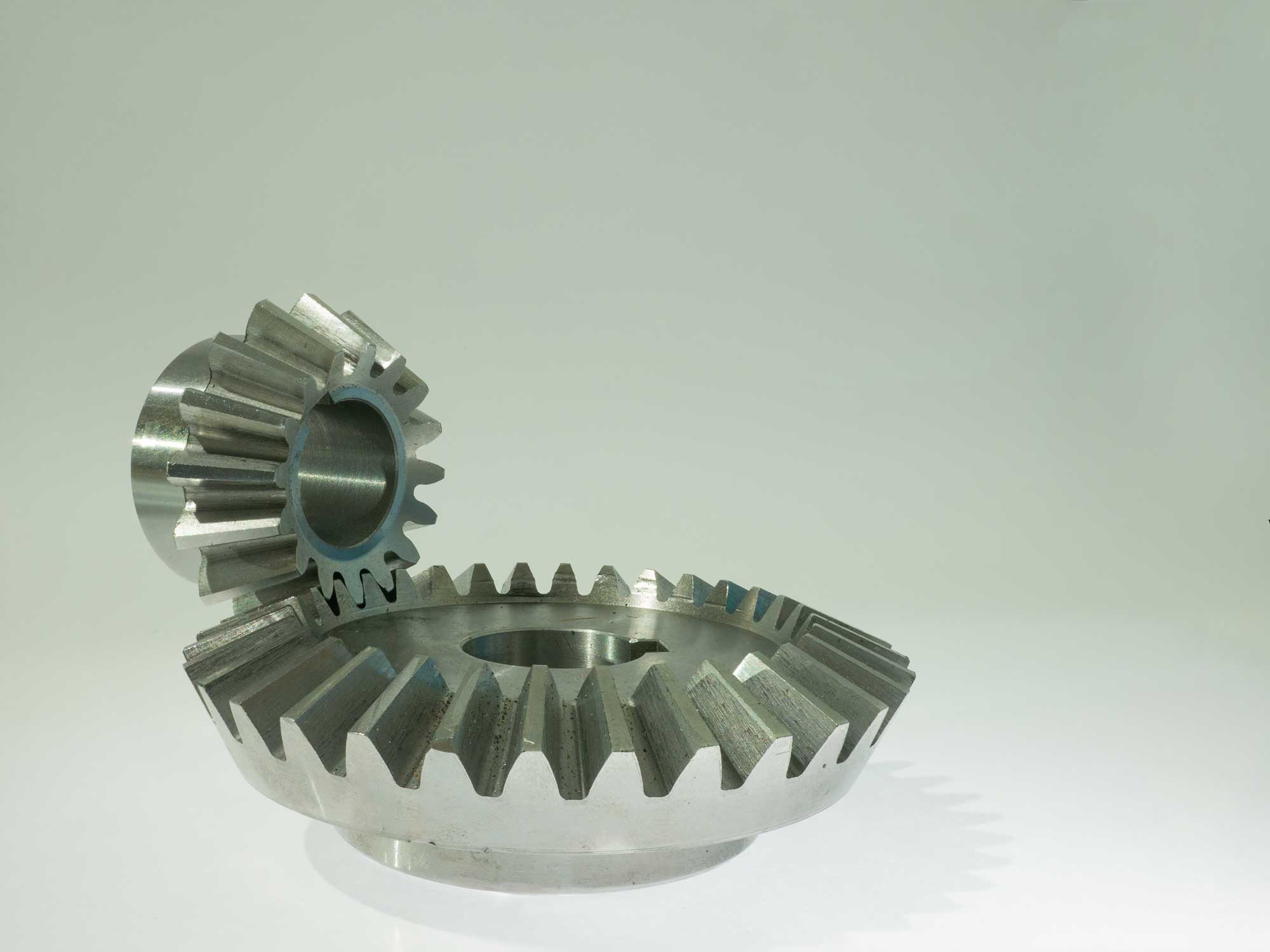Bevel Gears

Bevel gears are a type of gear specifically designed to transmit motion and power between two intersecting axes. In the context of automobiles, these gears find crucial application in the transmission system, differential, and power transfer mechanisms.
Power Transmission:
Bevel gears play a pivotal role in transmitting power between non-parallel axes, enabling the redirection of torque in various automotive components like differentials, transfer cases, and powertrains.
Differential Functionality
In a vehicle’s differential, bevel gears are instrumental in transferring power from the driveshaft to the wheels while allowing them to rotate at different speeds, especially during turns. This ensures smooth maneuverability and prevents wheel slippage.
Bevel gears play a pivotal role in transmitting power between non-parallel axes, enabling the redirection of torque in various automotive components like differentials, transfer cases, and powertrains.
Differential Functionality
In a vehicle’s differential, bevel gears are instrumental in transferring power from the driveshaft to the wheels while allowing them to rotate at different speeds, especially during turns. This ensures smooth maneuverability and prevents wheel slippage.
Differential Assembly:
The primary application of bevel gears in automobiles is within the differential assembly. Differential gears, which include bevel gears, distribute engine power to the wheels while allowing them to rotate at varying speeds.
Transmission Systems:
Bevel gears are also incorporated into transmission systems to change the direction of power transmission, especially in cases where the engine and gearbox are oriented differently.
The primary application of bevel gears in automobiles is within the differential assembly. Differential gears, which include bevel gears, distribute engine power to the wheels while allowing them to rotate at varying speeds.
Transmission Systems:
Bevel gears are also incorporated into transmission systems to change the direction of power transmission, especially in cases where the engine and gearbox are oriented differently.
The integration of bevel gears in automobiles dates back to the early 20th century with the development and evolution of transmission and differential systems. Their usage became increasingly vital as vehicles transitioned from simple mechanical setups to more complex drivetrain configurations.
Precision Engineering:
Bevel gears are intricately designed to ensure smooth operation and efficient power transmission. The gear teeth are cut at specific angles to match the intended function and load requirements.
Material Selection:
Manufacturers employ various materials, such as steel or hardened alloys, to create durable bevel gears capable of withstanding high torque and operating under extreme conditions.
Machining Processes:
Bevel gears undergo precise machining processes like milling, shaping, or grinding to achieve the necessary dimensions and tooth profiles critical for their functionality.
Car Bevel Gears: Standards and Regulations
Automotive components, including bevel gears, need to meet stringent quality and performance standards. These standards ensure that gears operate reliably and safely within the vehicle’s transmission and differential systems.
Bevel gears are intricately designed to ensure smooth operation and efficient power transmission. The gear teeth are cut at specific angles to match the intended function and load requirements.
Material Selection:
Manufacturers employ various materials, such as steel or hardened alloys, to create durable bevel gears capable of withstanding high torque and operating under extreme conditions.
Machining Processes:
Bevel gears undergo precise machining processes like milling, shaping, or grinding to achieve the necessary dimensions and tooth profiles critical for their functionality.
Car Bevel Gears: Standards and Regulations
Automotive components, including bevel gears, need to meet stringent quality and performance standards. These standards ensure that gears operate reliably and safely within the vehicle’s transmission and differential systems.


